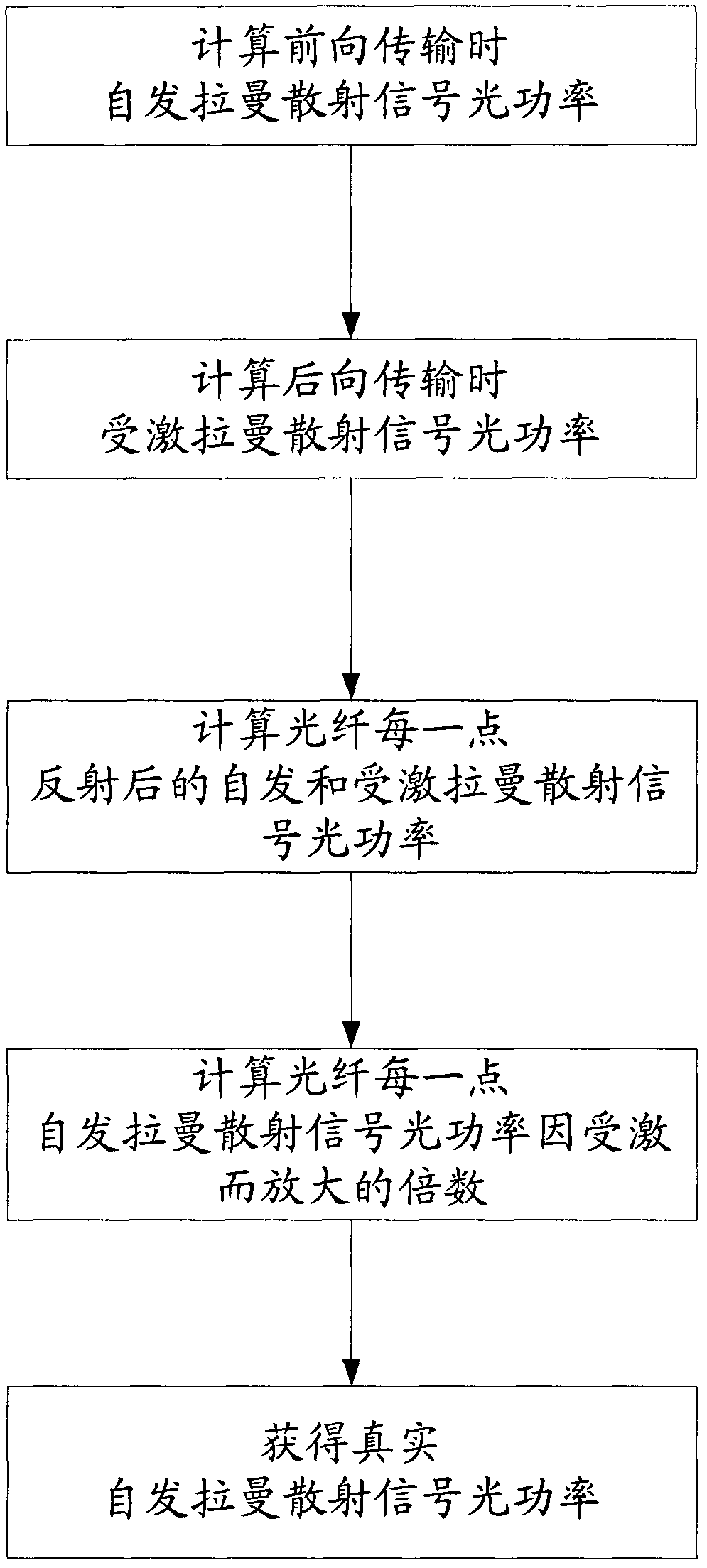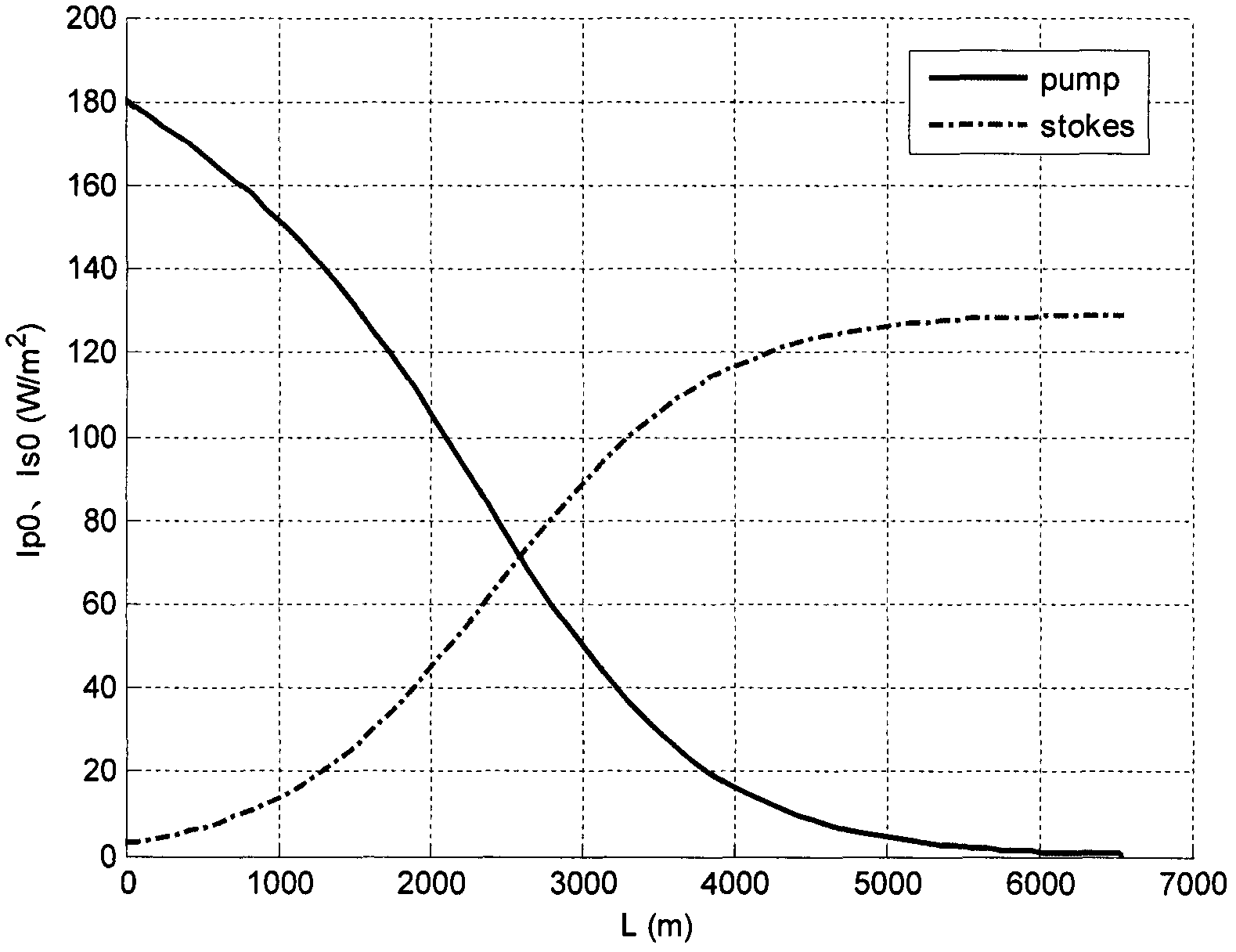Stimulated Raman scattering (SRS) compensation method in distributed optical fiber temperature sensor system
A technology of stimulated Raman scattering and temperature sensor, applied in thermometers, thermometers with physical/chemical changes, instruments, etc., can solve the problems of stimulated Raman scattering, stimulated Raman scattering, etc. Noise, the effect of improving the accuracy of temperature measurement
- Summary
- Abstract
- Description
- Claims
- Application Information
AI Technical Summary
Problems solved by technology
Method used
Image
Examples
Embodiment
[0055] (1) Carry out theoretical calculation first. The main parameters are selected as follows: pump light peak power P p =10W, effective core section A eff =3068μm 2 , fiber length L=6550m, pump light pulse width T 0 =10ns, absolute temperature T=300k, fiber refractive index n=1.5.
[0056] (2) According to the selected parameters, use the following formula to calculate the light intensity I of the backward transport pump light p0 (L=6550m) and backward transmission signal light intensity I s0 (L=6550m)
[0057] I p0 (L=6550)=I' p0 (0)exp(-α p ×6550)Γ p (1)
[0058] I s 0 ( L = 6550 ) = 1 2 v ρ s I p 0 ( 6550 ) ...
PUM
| Property | Measurement | Unit |
|---|---|---|
| refractive index | aaaaa | aaaaa |
Abstract
Description
Claims
Application Information
 Login to View More
Login to View More - R&D
- Intellectual Property
- Life Sciences
- Materials
- Tech Scout
- Unparalleled Data Quality
- Higher Quality Content
- 60% Fewer Hallucinations
Browse by: Latest US Patents, China's latest patents, Technical Efficacy Thesaurus, Application Domain, Technology Topic, Popular Technical Reports.
© 2025 PatSnap. All rights reserved.Legal|Privacy policy|Modern Slavery Act Transparency Statement|Sitemap|About US| Contact US: help@patsnap.com



